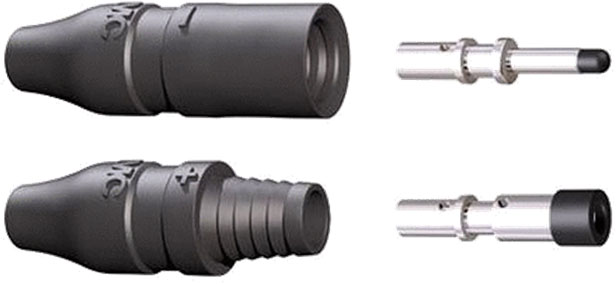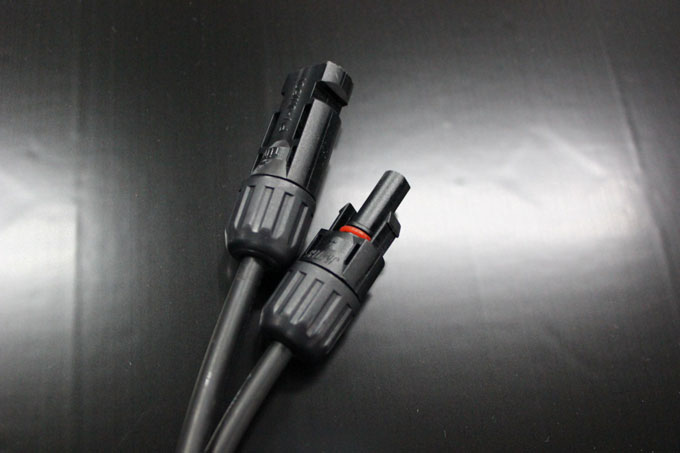MC1, MC2, MC3 and MC4 connector explained
The solar panel is given a very good protection against weather during the manufacturing process. But the lead out cables can become the Achilles heels of the panel. (For those who do not know, Achilles was a character in Greek mythology. When he was born his mother was told that he would die young. She somehow took him to the river of life and dipped his head down. But the heel she was holding him by was not wetted. When came of age he fought victoriously because nothing would harm him. But then a poisoned arrow hit that very vulnerable heel, and he died as predicted). MC 1 and MC3 connector Previously, the lead out wires of the solar panels would be screw tied to other panels or control equipment, in a simple junction box and would soon succumb to weather effects. National Electric Code (NEC) forbids people other than trained technicians to handle naked equipment at more than 50 volts. Solar panels in series invariably exceed this.
 MC3 Connectors
MC3 Connectors
To overcome these two problems different designs were put on the market starting in about year 2000. Essentially, these were rubber shielded jacks and sockets that would push mate. Now those could be used by ordinary people. But they had no locking. These were what we call MC1 and MC3 connectors. MC2 and MC4 connector: positive locking and ingress protection NEC code was revised in 2008 to additionally require positive locking and ingress protection. MC2 and MC4 are again push fit types but have a positive locking mechanism and proper ingress protection as per IEC 29.
 MC4 connectors
MC4 connectors
Normally a tool will be required to disconnect, but in some designs tabs can be pressed to unlock and pull. They will normally take AWG 10 or AWG 12 wires to crimp or solder. Current rating specifications by one manufacturer are about 30A, with contact resistance less than 0.5 Ω. Voltage is normally rated to 600 V in the US and 1000 V outside the US, and ingress protection to IP 67. The letters ‘MC’ stands for Multicontact, and do not imply multiple contacts in the connector. Multicontact was the name of one of the original manufacturers which caught on. The digits 1 to 4 stand for the contact pin cross section in mm2.

DIY dude
on 21 Sep 2023Garry
on 10 Nov 2021Serei
on 20 Sep 2021HEMANT PUNJ
on 20 Jul 2016Nick
on 30 Aug 2017James Hannah
on 24 Jun 2018Ted Wansley
on 29 May 2019